Calf pain after hiking is a common issue that many hikers experience, especially beginners. It can range from mild discomfort to severe pain that can last for days. As someone who enjoys hiking, I have experienced calf pain myself and understand how frustrating it can be. In this article, I will share some of the causes of calf pain after hiking and provide tips on how to prevent it.
One of the main causes of calf pain after hiking is overexertion. When you push yourself too hard or hike a trail that is too difficult for your current fitness level, your calf muscles can become strained or even injured. Another common cause of calf pain is improper footwear. Wearing shoes or boots that don’t fit well or provide enough support can put extra strain on your calf muscles, leading to pain and discomfort. In this article, I will discuss how to choose the right footwear for hiking and how to properly break them in to prevent calf pain.
If you’re experiencing calf pain after hiking, it’s important to take steps to prevent it from becoming a chronic issue. By understanding the causes of calf pain and taking the necessary precautions, you can enjoy your hikes without having to deal with discomfort or pain. In the next sections of this article, I will provide more in-depth information on how to prevent and treat calf pain after hiking.
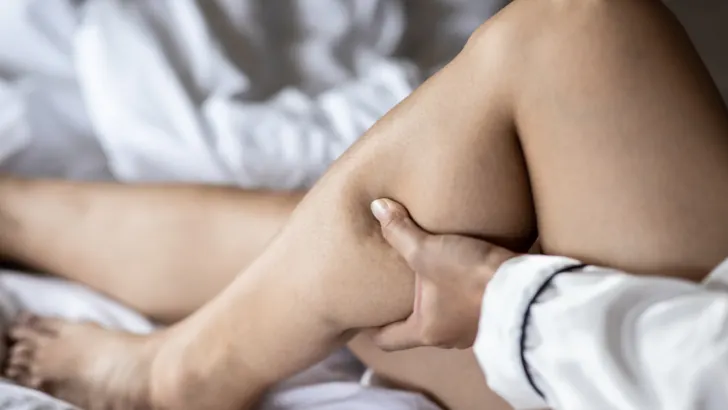
Calf Pain After Hiking
As someone who enjoys hiking, I know how frustrating it can be to experience calf pain after a long hike. The calf muscles, which include the gastrocnemius and soleus, are prone to strains when overworked. This can lead to soreness, stiffness, and even difficulty walking.
One of the main causes of calf pain after hiking is overuse. When you hike, your calf muscles are constantly working to help you push off while walking. This can lead to fatigue and strain, especially if you are hiking on uneven terrain or carrying a heavy backpack. Additionally, if you are not used to hiking or have not been active in a while, your calf muscles may not be strong enough to handle the demands of hiking.
To prevent calf pain after hiking, it is important to properly prepare your body before hitting the trails. This includes stretching your calf muscles before and after your hike, as well as gradually increasing the intensity and duration of your hikes over time. It is also important to wear proper footwear that supports your feet and ankles.
If you do experience calf pain after hiking, there are several things you can do to alleviate your symptoms. Resting and elevating your legs can help reduce swelling and discomfort. Applying ice to your calves can also help reduce inflammation and pain. Additionally, over-the-counter pain relievers such as ibuprofen or acetaminophen can help reduce pain and inflammation.
In summary, calf pain after hiking is a common issue that can be prevented by properly preparing your body and taking steps to reduce strain on your calf muscles. If you do experience calf pain, rest, ice, and over-the-counter pain relievers can help alleviate your symptoms.
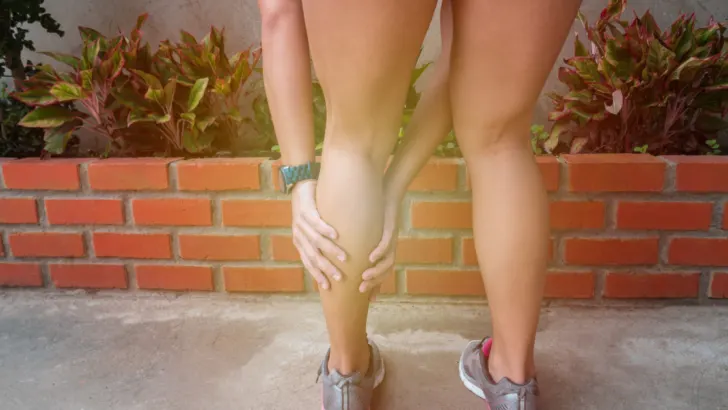
Related Posts:
Causes Of Calf Pain After Hiking
As a hiker, experiencing calf pain after a hike is not uncommon. The calf muscles are heavily involved in hiking, and they can become sore and painful due to various reasons. In this section, I will discuss the common causes of calf pain after hiking.
Tightness In The Calf Muscles
One of the most common causes of calf pain after hiking is tightness in the calf muscles. When you hike, your calf muscles work hard to lift your body weight with each step. Over time, this can cause the muscles to become tight and stiff, leading to pain and discomfort.
To prevent tightness in the calf muscles, it’s important to stretch before and after hiking. You can also do calf stretches throughout the day to keep the muscles loose and flexible. Additionally, foam rolling can help to release tension in the muscles and prevent soreness.

Overuse Of The Calf Muscles
Another cause of calf pain after hiking is the overuse of the calf muscles. If you’re new to hiking or have recently increased the intensity or duration of your hikes, your calf muscles may not be used to the workload. This can lead to overuse and strain on the muscles, resulting in pain and discomfort.
To prevent overuse of the calf muscles, it’s important to gradually increase the intensity and duration of your hikes. You can also incorporate strength training exercises for the calf muscles to help them become stronger and more resilient.
Injury To The Calf Muscles
In some cases, calf pain after hiking may be due to an injury to the calf muscles. This can occur if you overexert yourself or if you have an underlying muscle or joint condition. Common injuries include muscle strains, sprains, and tears.
If you suspect that you have an injury to your calf muscles, it’s important to rest and seek medical attention if the pain persists. Continuing to hike with an injury can lead to further damage and a longer recovery time.
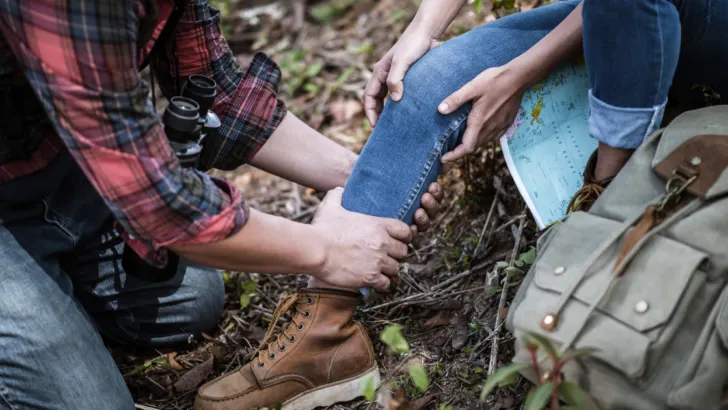
Related Posts:
Symptoms Of Calf Pain After Hiking
As a hiker, I know that calf pain is a common problem that many hikers face, especially after a long hike or if you are new to hiking. Calf pain can be a result of various factors such as overuse, improper footwear, lack of stretching, and dehydration. In this section, I will discuss the symptoms of calf pain after hiking.
Pain In The Calf Muscles
One of the most common symptoms of calf pain after hiking is pain in the calf muscles. The pain can be mild to severe and can vary from person to person. It can be a dull ache or a sharp pain that can make it difficult to walk or climb stairs. The pain can be felt in one or both legs and can be accompanied by stiffness.
Swelling In The Calf Muscles
Another symptom of calf pain after hiking is swelling in the calf muscles. The swelling can be mild to severe and can cause discomfort and pain. Swelling occurs when there is an accumulation of fluid in the calf muscles. It can be caused by overuse, dehydration, or an injury to the calf muscles.
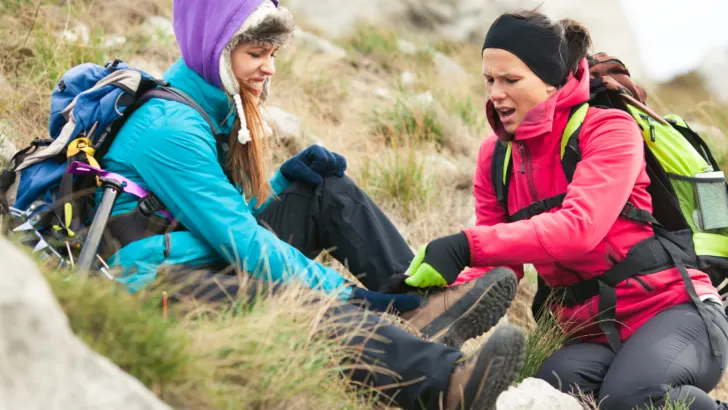
Tenderness In The Calf Muscles
Tenderness in the calf muscles is another symptom of calf pain after hiking. The calf muscles can be tender to the touch and can be painful when pressure is applied. Tenderness can be caused by inflammation in the calf muscles or an injury to the calf muscles.
In conclusion, calf pain after hiking can be a common problem for hikers. It is important to recognize the symptoms of calf pain and take appropriate measures to prevent it. Stretching before and after hiking, wearing proper footwear, staying hydrated, and taking breaks during a hike can help prevent calf pain. If you experience severe or persistent calf pain, it is important to seek medical attention.
Treatment For Calf Pain After Hiking
If you’re experiencing calf pain after hiking, there are a few things you can do to help alleviate the discomfort. In this section, I’ll go over some of the most effective treatments for calf pain after hiking.
Rest
One of the most important things you can do to treat calf pain after hiking is to rest. It’s important to give your muscles time to heal and recover. Avoid any activities that may aggravate the pain, such as running or jumping. Instead, focus on gentle stretching and low-impact exercises like walking or swimming.
Ice
Applying ice to your calves can help reduce inflammation and alleviate pain. Wrap a cold pack or ice pack in a towel and apply it to your calves for 15-20 minutes at a time, several times a day. Be sure to give your skin a break between applications to avoid frostbite.
Compression
Using compression can help reduce swelling and improve circulation in your calves. You can use compression socks or sleeves to apply pressure to your calves. Make sure the compression is snug but not too tight, as this can restrict blood flow.
Elevation
Elevating your legs can help reduce swelling and improve circulation. Lie down and prop your legs up on a pillow or cushion so that they’re above your heart. This will help blood flow back to your heart and reduce swelling in your calves.
Remember to listen to your body and take it easy if you’re experiencing calf pain after hiking. With the right treatment, you can get back on your feet and back to your favorite activities in no time.
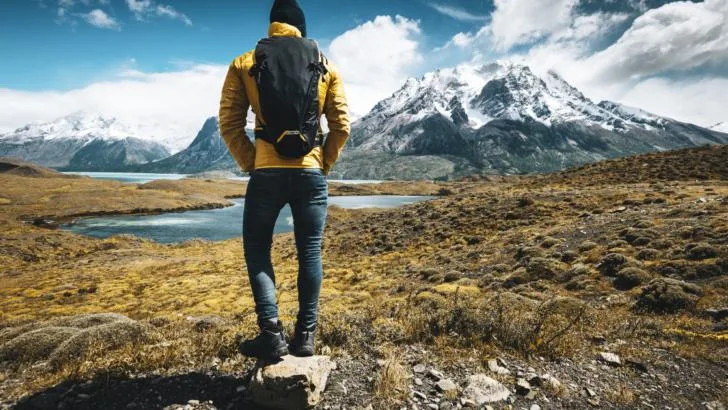
Prevention Of Calf Pain After Hiking
As a hiker, I know how frustrating it can be to experience calf pain after a hike. Luckily, there are several ways to prevent this discomfort from happening. Here are some tips that have worked for me:
Stretch Your Calf Muscles Before And After Hiking
Stretching your calf muscles before and after hiking can help prevent soreness and stiffness. Some simple calf stretches include standing with your toes on a step and lowering your heels down, or leaning against a wall and stretching one leg behind you while keeping your heel on the ground. Hold each stretch for 15-30 seconds and repeat a few times.
Wear Proper Footwear
Wearing proper footwear is essential for preventing calf pain. Make sure your shoes or boots fit well and provide adequate support. Choose shoes that have good arch support and a cushioned sole. If you’re hiking on uneven terrain, consider wearing hiking boots with ankle support to prevent injury.
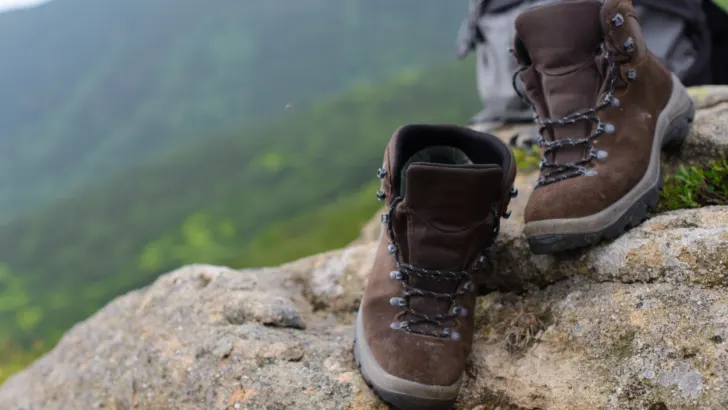
Start Slowly And Gradually Increase The Intensity Of Your Hikes
One of the most common causes of calf pain after hiking is overexertion. To prevent this, start with shorter hikes and gradually increase the distance and intensity of your hikes. This will help your muscles adapt to the stress of hiking and prevent soreness and injury.
Related Posts:
If The Pain Is Severe Or Does Not Improve With Rest, You Should See A Doctor
If you experience severe calf pain after hiking, it is important to seek medical attention. While minor pain and discomfort can be relieved with rest and self-care, severe pain could be a sign of a more serious injury or condition.
Here are some signs that your calf pain may require medical attention:
- The pain is severe and does not improve with rest
- The pain is accompanied by swelling, redness, or warmth in the affected area
- You have difficulty walking or putting weight on the affected leg
- You have a fever or other signs of infection
If you experience any of these symptoms, it is important to see a doctor as soon as possible. Delaying treatment could lead to further complications and prolong your recovery time.
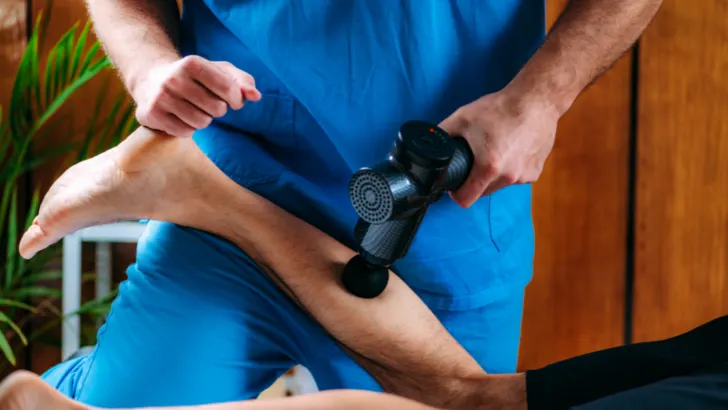
When you see a doctor for calf pain, they will likely perform a physical exam and ask about your symptoms and medical history. Depending on the severity and cause of your pain, they may recommend one or more of the following treatments:
- Rest and elevation: Keeping the affected leg elevated and avoiding activities that aggravate the pain can help reduce swelling and promote healing.
- Ice and heat therapy: Applying ice packs or heat pads to the affected area can help relieve pain and reduce inflammation.
- Compression: Wearing compression stockings or wraps can help improve circulation and reduce swelling.
- Medications: Over-the-counter pain relievers like ibuprofen or acetaminophen can help relieve pain and reduce inflammation. In some cases, your doctor may prescribe stronger pain medications or muscle relaxants.
- Physical therapy: Working with a physical therapist can help you strengthen the muscles in your legs and improve your range of motion.
- Surgery: In rare cases, surgery may be necessary to treat severe or persistent calf pain.
Remember, it is always better to err on the side of caution when it comes to your health. If you are experiencing severe calf pain after hiking, don’t hesitate to seek medical attention.
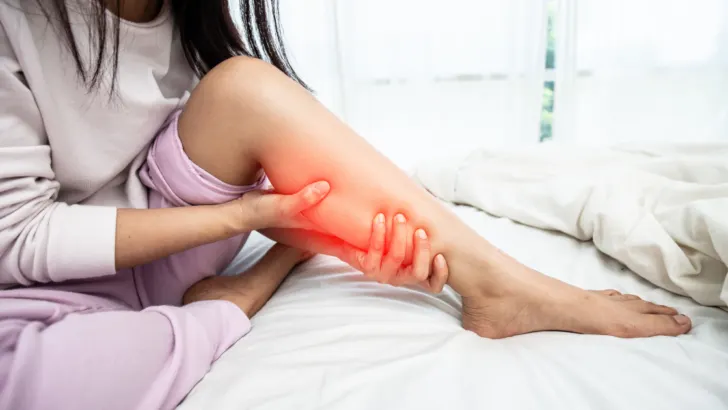
There Are Some Exercises That You Can Do To Help Strengthen Your Calf Muscles And Prevent Pain
As someone who enjoys hiking, I know firsthand how calf pain can put a damper on an otherwise enjoyable experience. Fortunately, there are exercises that you can do to help strengthen your calf muscles and prevent pain.
One effective exercise is the double-leg calf raise. This exercise targets both the gastrocnemius and soleus muscles in your calves. To perform this exercise, stand with your feet shoulder-width apart and raise your heels off the ground as high as you can. Hold for a few seconds, then lower your heels back down. Repeat for several sets.
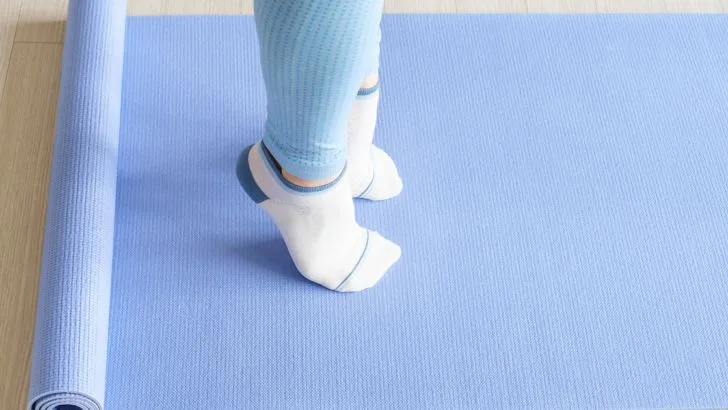
Another exercise that can help is the seated calf raise. This exercise targets the soleus muscle, which is located deeper in your calf. To perform this exercise, sit on a calf raise machine with your feet flat on the platform and your knees bent at a 90-degree angle. Raise your heels as high as you can, then lower them back down. Repeat for several sets.
In addition to these exercises, there are also stretches that can help prevent calf pain. One effective stretch is the wall stretch. To perform this stretch, stand facing a wall with your hands on the wall at shoulder height. Step one foot back and press your heel into the ground while keeping your knee straight. Hold for a few seconds, then switch sides.
It’s important to remember that these exercises and stretches should be done regularly to see the most benefit. Additionally, it’s always a good idea to warm up before exercising and to cool down and stretch afterward. By incorporating these exercises and stretches into your routine, you can help strengthen your calf muscles and prevent pain during your next hiking adventure.
If You Are Prone To Calf Pain, You May Want To Consider Wearing Compression Socks While Hiking
As someone who is prone to calf pain, I know how frustrating it can be to have to cut a hike short or deal with discomfort during and after the hike. That’s why I highly recommend considering wearing compression socks while hiking.
Compression socks work by applying pressure to the lower legs, which helps improve blood flow and reduce muscle vibration. This can help prevent calf pain and muscle fatigue during and after your hike.
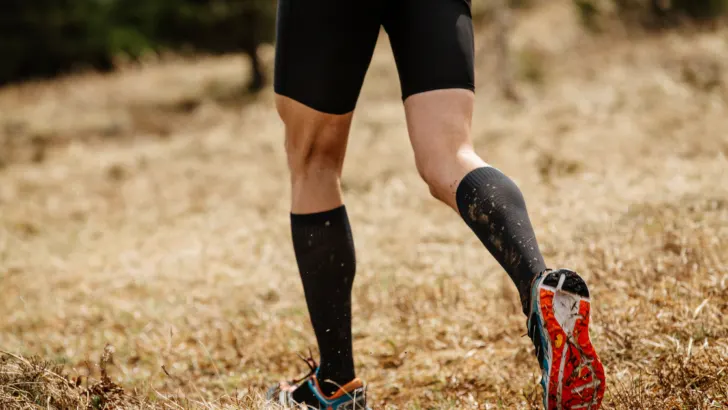
When choosing compression socks, make sure to look for ones that provide enough compression for your needs. A compression level of 15-20 mmHg is usually sufficient for hiking, but if you have more severe calf pain or circulation issues, you may want to consider higher compression levels.
It’s also important to make sure the socks fit properly. Compression socks that are too tight can actually worsen calf pain, while socks that are too loose won’t provide enough compression to be effective.
In addition to wearing compression socks, there are other steps you can take to prevent calf pain while hiking. Make sure to stretch your calf muscles before and after your hike, stay hydrated, and take breaks to rest and stretch your legs during the hike.
Overall, if you are prone to calf pain, wearing compression socks while hiking can be a simple and effective way to reduce discomfort and enjoy your hike to the fullest.
Conclusion
In conclusion, calf pain after hiking is a common issue that many hikers face. It can be caused by a variety of factors, including fatigue, muscle strain, and improper footwear. To prevent calf pain, it is important to take proper precautions before and during your hike.
One of the most important things you can do to prevent calf pain is to wear appropriate footwear. Make sure your shoes or boots fit properly and provide good support for your feet and ankles. You may also want to consider wearing compression socks or sleeves to help improve blood flow and reduce muscle fatigue.
Stretching before and after your hike can also help prevent calf pain. Focus on stretching your calf muscles, as well as your hamstrings, quads, and glutes. You can also try foam rolling or using a massage ball to help relieve tightness and soreness in your muscles.

If you do experience calf pain after a hike, there are several things you can do to help relieve the discomfort. Rest and ice can help reduce swelling and inflammation, while compression and elevation can help improve blood flow and reduce pain. Over-the-counter pain relievers such as ibuprofen or acetaminophen may also be helpful.
In summary, calf pain after hiking can be a frustrating and uncomfortable experience. However, by taking proper precautions before and during your hike, and by addressing any pain or discomfort promptly, you can help prevent and manage calf pain and enjoy your hiking experience to the fullest.
Frequently Asked Questions
What are some common causes of calf pain after hiking?
Calf pain after hiking can be caused by several factors, such as overuse, muscle strain, dehydration, or inadequate stretching. The most common cause is overuse, which happens when you push yourself too hard or hike for longer than your body is used to. Muscle strain can occur when you walk on uneven terrain or carry a heavy backpack. Dehydration can cause cramping and soreness in your calves, so it’s important to drink enough water during your hike. Finally, inadequate stretching can lead to tight muscles, which can cause pain and discomfort.
How can I prevent calf pain when walking uphill?
Walking uphill can be challenging, especially for your calves. To prevent calf pain when walking uphill, it’s important to warm up properly before your hike. You can also try to maintain a steady pace and take frequent breaks to rest your muscles. Wearing proper footwear with good arch support can also help reduce the strain on your calves. Finally, make sure to stretch your calves before and after your hike to prevent muscle tightness and soreness.
What are some ways to relieve sore calves after hiking?
If you experience sore calves after hiking, there are several ways to relieve the discomfort. Resting your legs and elevating your feet can help reduce swelling and inflammation. Applying ice to your calves can also help numb the pain and reduce inflammation. Gentle stretching and massage can also help loosen tight muscles and improve circulation. Over-the-counter pain relievers, such as ibuprofen or acetaminophen, can also provide temporary relief.
What are some symptoms of post-hike fatigue?
Post-hike fatigue is a common condition that can occur after a long hike. Symptoms include muscle soreness, fatigue, weakness, and decreased range of motion. You may also experience headaches, dizziness, or nausea. It’s important to rest and recover after a long hike to prevent further injury or fatigue.
How can I recover my calves after hiking?
To recover your calves after hiking, it’s important to rest and allow your muscles to heal. You can also try gentle stretching and massage to improve circulation and loosen tight muscles. Applying heat to your calves can also help increase blood flow and reduce soreness. Finally, make sure to drink plenty of water and get enough rest to help your body recover.
What are some effective methods to relieve leg pain after hiking?
There are several effective methods to relieve leg pain after hiking. Resting your legs and elevating your feet can help reduce swelling and inflammation. Applying ice or heat to your legs can also help reduce pain and discomfort. Gentle stretching and massage can also help loosen tight muscles and improve circulation. Over-the-counter pain relievers, such as ibuprofen or acetaminophen, can also provide temporary relief.
